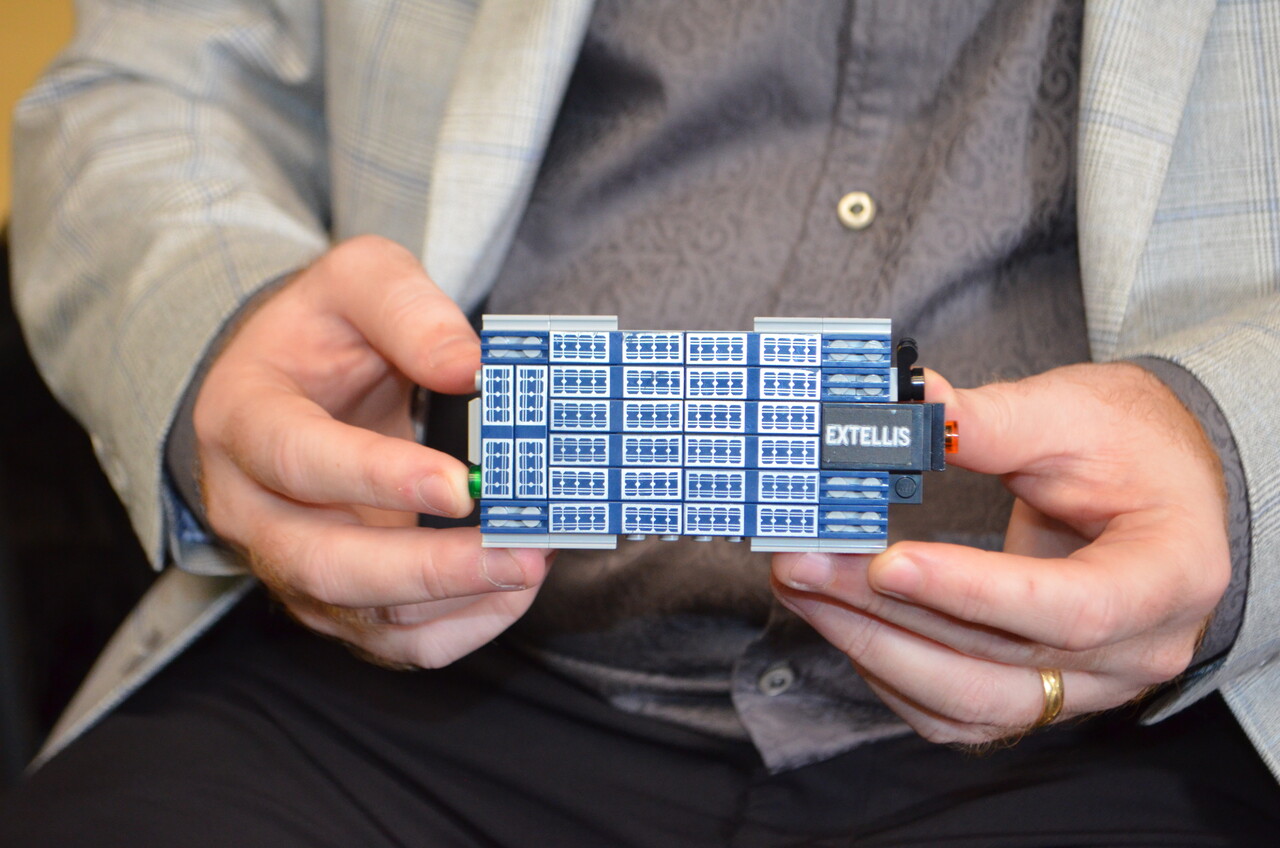New Frontiers in Space

NOTE: This article was written by Susan Miller and first appeared on the Duke Today website.
Call it a science fair for adults. On November 20, Duke inventions and companies started by faculty and students will be featured at the sixth annual ‘Invented at Duke’ celebration. Duke Today introduces you to three of the inventor teams who were supported with financing and mentoring by Duke translational funds and incubators.
Michael Boyarsky, a research scientist in electrical and computer engineering, holds a model made with Legos and explains how his new technology differs from current satellite sensors.
“We have pioneered a new way of making satellite imaging antennas. Our metamaterial antennas enable a jump from taking 100 images per day to 10,000. This boost is possible thanks to the way we were able to engineer new solutions to the challenges of operating in space,” Boyarsky says.
Beyond just the capacity bump, the technology allows satellites to return quickly, delivering real-time images of the Earth within 15 minutes from a constellation of satellites, “allowing us to truly track the Earth as it’s evolving from natural and human causes,” he adds.
Boyarsky began working on the technology 10 years ago as a grad student at Duke in David Smith’s metamaterials lab. He has since received several grants, including one for $2.3 million from the Defense Advanced Research Projects Agency (DARPA).
He’s working to raise $6 million in seed money to get his company, Extellis, and his invention off the ground – literally. The seed funding will allow Extellis to launch a demo satellite – and to start selling images. “Thanks to a Gilhuly-funded project, within the Duke New Ventures program, our business strategy has come together,” Boyarsky says.
“With our antenna technology, we can build small satellites with large antennas. We will have a big antenna on one side, lots of solar panels on the other, and still only require a small, standard satellite module at the end,” Boyarsky says.
Satellite cameras can’t see at night or through clouds, meaning they’re lucky to deliver a reliable image once a week. While microwave satellites like his can see through clouds and at night, current antennas can only collect a handful of images per day and are affordable only to the military, according to Boyarsky.

However, his technology has a wide range of commercial applications. It can sense excessive fertilizer and water being applied to farms, find pipeline leaks, and identify trees threatening nearby power lines. Another compelling use is for natural disaster prediction and response. It can also find new routes through the melting ice caps, allowing ships to move efficiently and save fuel.
“Most of these applications have been shown already, but the current satellites just can’t take enough images each day for everyday monitoring. The most exciting aspect of our company is the ability to democratize access to satellite imagery by lowering prices to a level affordable to customers beyond the military,” Boyarsky adds: “all thanks to our antenna technology.”